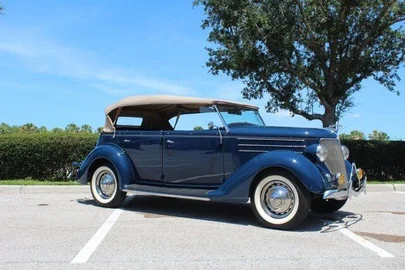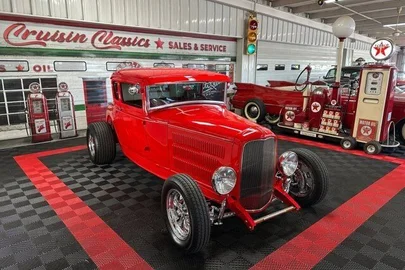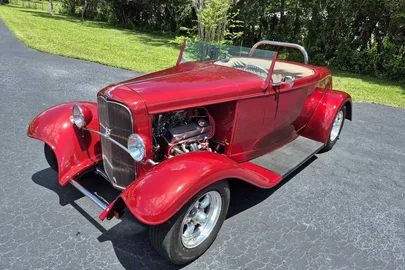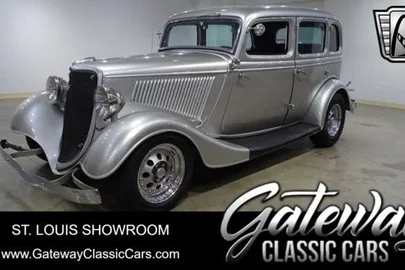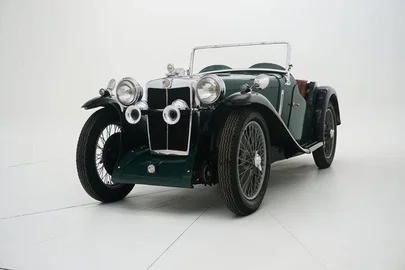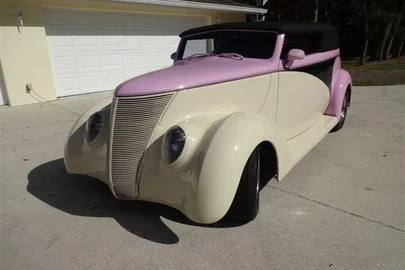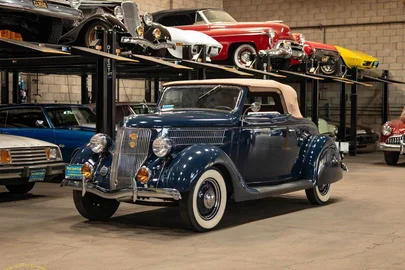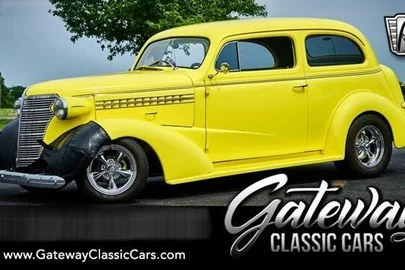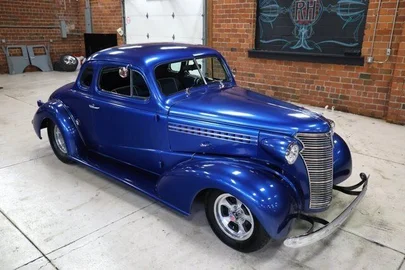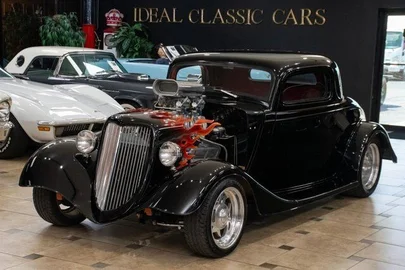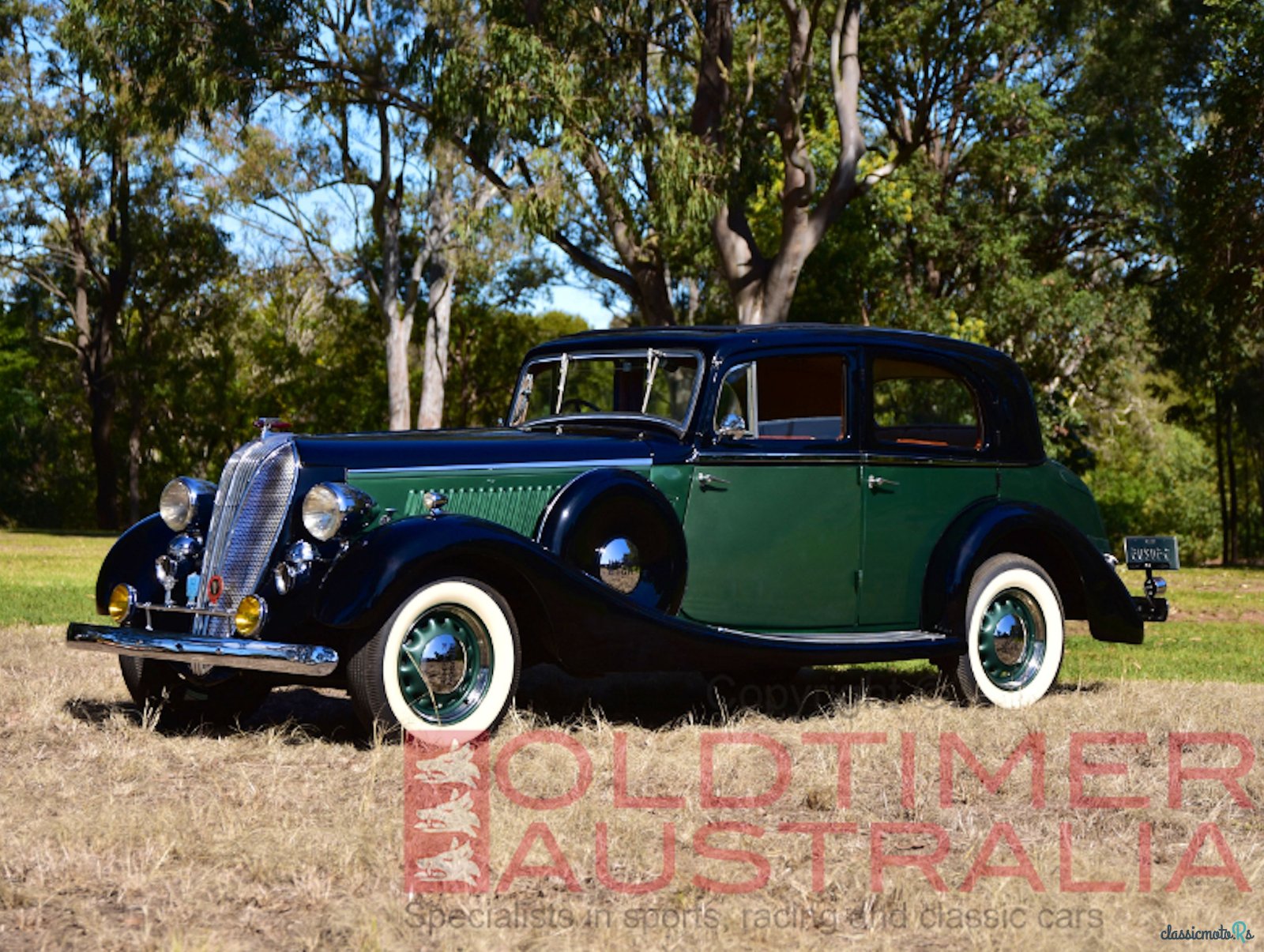
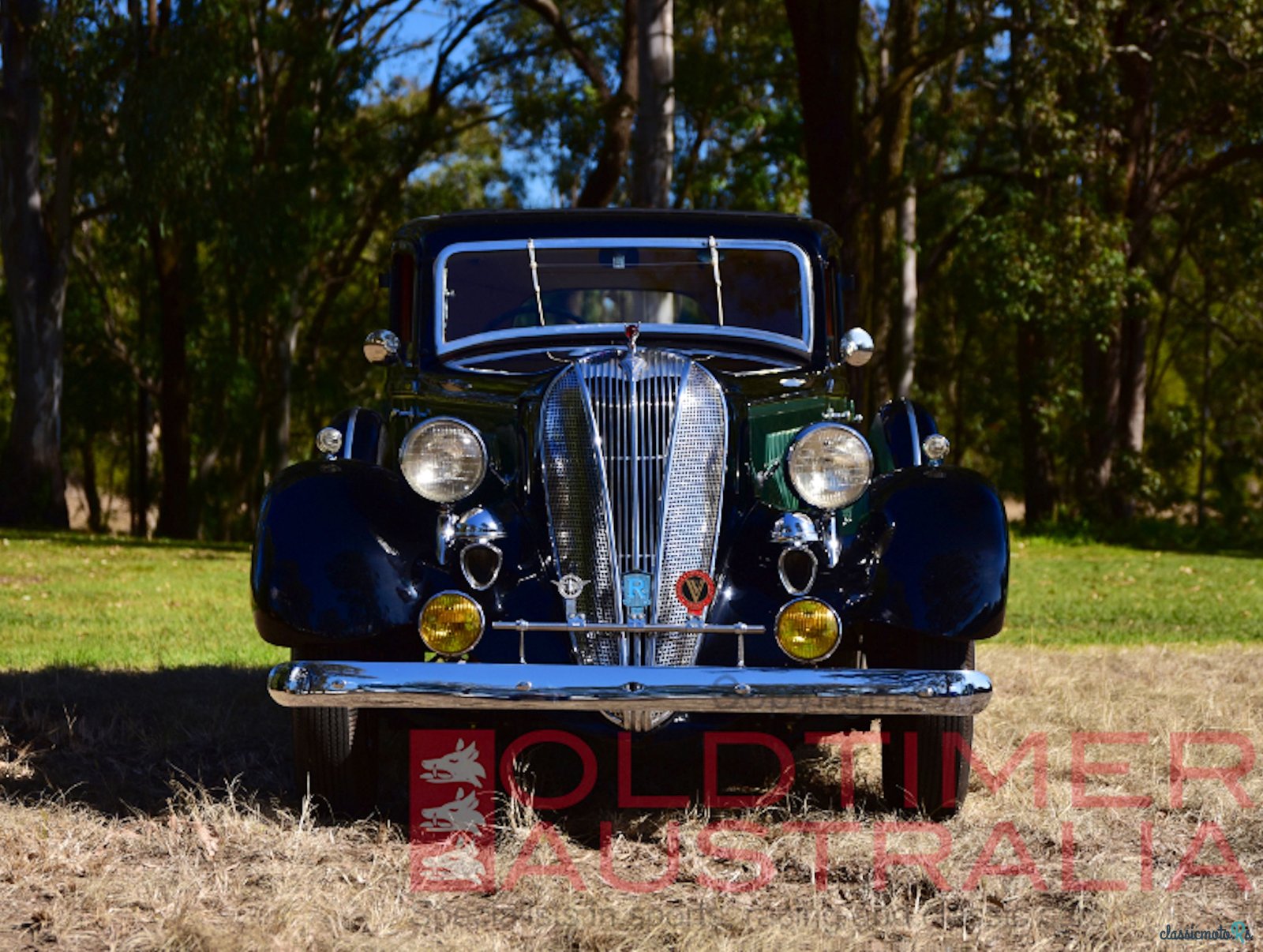
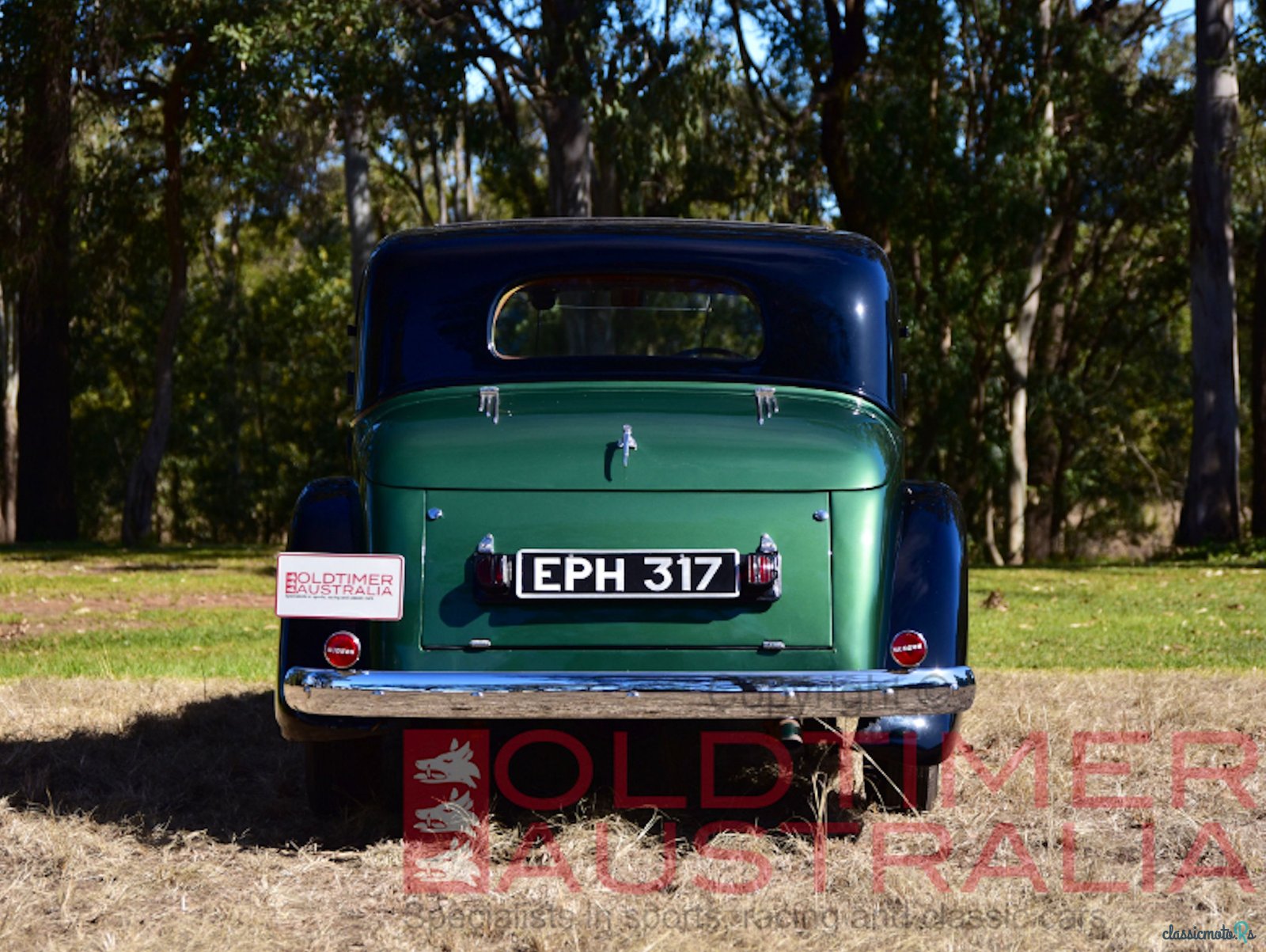
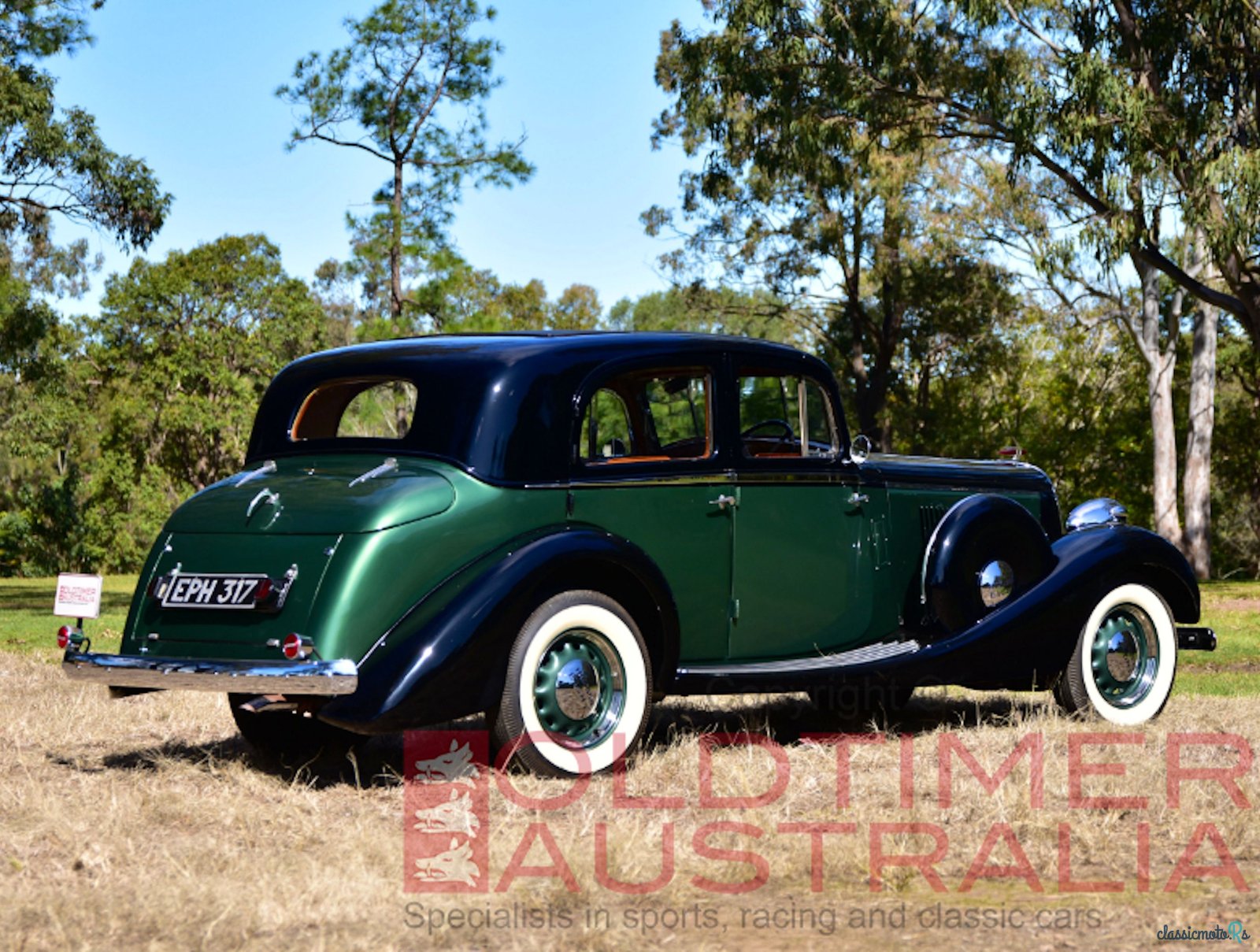

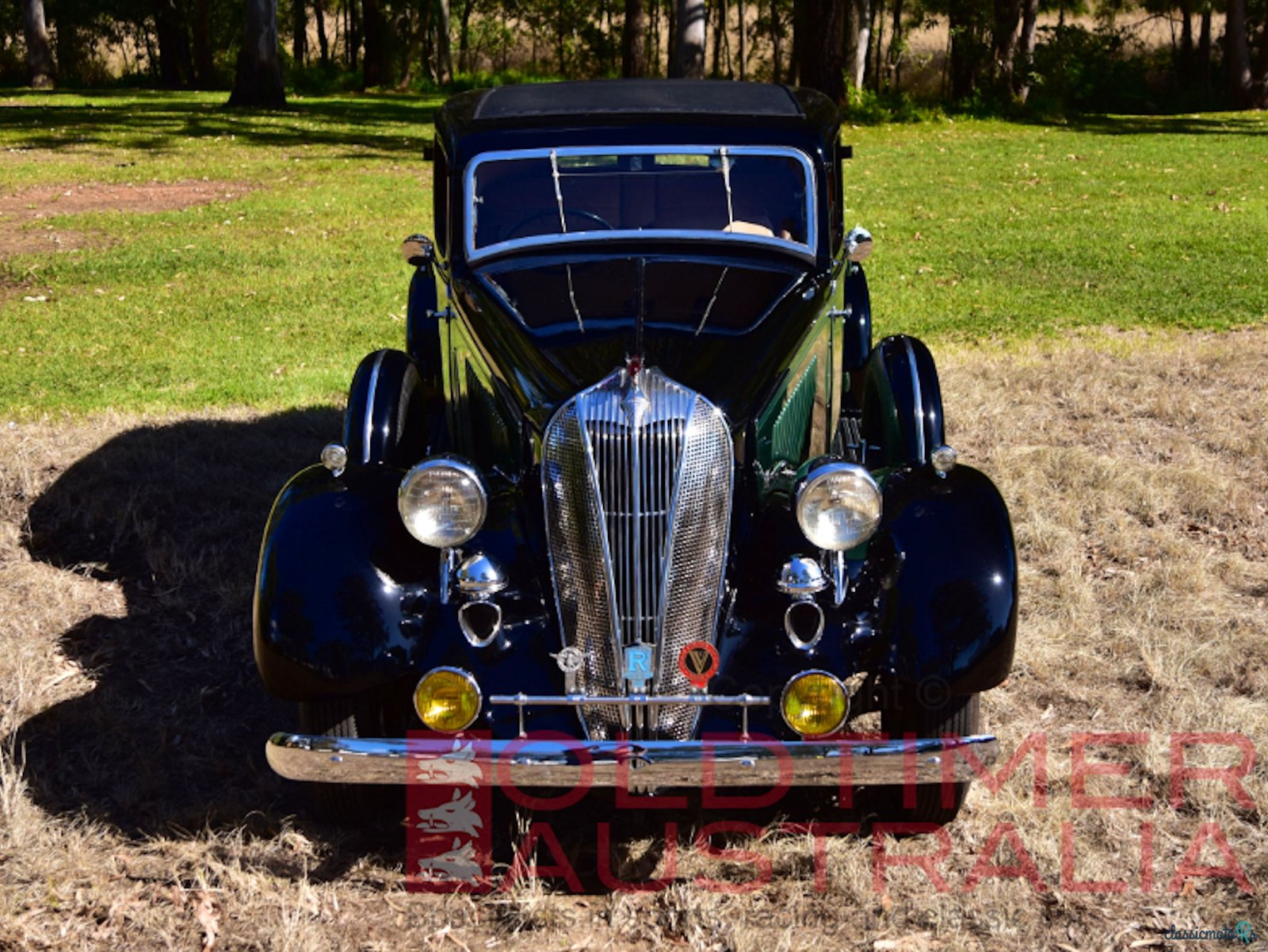
6 photos
1936' Hudson Stratton Sports Saloon
Report This Ad!Rate This!Bookmark This
£45,950Published 1 January 2023ID: Dfj8Pb
Expired
2 years, 11 months ago
2 years, 11 months ago
Information from the owner
Body: Sports Car
Age: 87 years
Exterior color: Green
Seller's comments about 1936' Hudson Stratton Sports Saloon
In 1881, Joseph Lowthian Hudson founded an upscale retail department store in Detroit, Michigan. Hudson’s department store was very successful and in 1909 he provided the necessary capital and together with seven other Detroit businessmen, he formed a company to produce automobiles. Hudson allowed for his name to be used for the company and on 20th February 1909 the Hudson Motor Car Company was founded. One of the goals for the company was to produce a car that would sell for less than $1, 000.
Production started quickly and on the 3rd July their first car rolled out of the factory on the East side of Detroit. The Hudson Twenty was one of the lowest priced cars available in the US and it sold well. In its first year of production 4, 508 cars were sold. By 1911 production had increased to 6, 486 cars. In the early days the bodies for the cars were built by coachbuilder Fisher Body Co. The cooperation only ceased because GM purchased Fisher Body Co in 1919. Hudson had to look for another partner and from 1923 onwards the bodies were built by Massachusetts based Biddle and Smart. 1926 saw the peak in production for Biddle and Smart when they delivered 41, 000 bodies to the Hudson Motor Car company. Unfortunately, Biddle and Smart only had the ability to produce bodies in aluminum and when Hudson opened their new $10 million body plant facility on the 1st July 1926, which allowed them to produce steel bodies, Biddle and Smart saw their numbers drop quickly.
Hudson in the meantime kept expanding and opened factories overseas in the UK and Belgium. Hudson introduced a number of firsts in the automobile industry. They were the first company to introduce a dual brake system, the first company to use dashboard oil pressure and generator warning lights and they were the first company to use a balanced crankshaft. That crankshaft was first used in the Hudson straight six engine which was the first engine produced by Hudson.
In 1930 Hudson introduced a new engine, a flathead inline eight cylinder which had the block and the crankcase cast as one unit and it was fitted with two cylinder heads. It had a capacity of 218. 8 cu or 3. 6 litres and produced 80hp.
In 1932 Hudson introduced the Terraplane. It had a totally new chassis and initially used a 6 cylinder engine which was quickly followed by an 8 cylinder engine. The introduction of the 8 cylinder engine also resulted in a model name change. Going forward the 6 cylinder models were sold as a Terraplane and the 8 cylinder cars as a Hudson. The 8 cylinder engine now produced around 122hp.
The 1930’s were turbulent times for coach builders. A lot of car manufacturers started to produce complete cars inhouse. Starting a new coach building company was therefore a brave move and that was exactly what Percy Twigg did in March 1934 when he set up Coachcraft Ltd. Based in West London and backed by Captain R O’Neill Butler, Coachcraft bodied a great variety of vehicles, but most notably they were the preferred coachbuilder for Railton. In addition to all sorts of British automobiles, Coachcraft provided bodies for German Adlers and French Delages as well as American Terraplanes and Hudsons.
Oldtimer Australia is delighted to offer for sale a 1936 Hudson Stratton Sports Saloon by Coachcraft.
It is understood this car was sold new to the British Foreign Service and delivered to the Governor General of Hong Kong, Sir Andrew Caldecott. It was used as his private ‘state car’ until just before World War II arrived in Hong Kong. It was then sent by the British Government to Canada for safekeeping.
It is understood Coachcraft built only one of these cars in 1936 and a very small number in total.
At some stage the car found its way to the United States and the prior to current owner came across the car at a Hudson car club meeting. He immediately fell in love with this stunning Hudson and decided to buy the car. It was totally disassembled at the time but fortunately he was close to retirement and decided this was a perfect project for him. Over the next couple of months, the car was painted in the formal colours worn by his great grandfather while he was an officer in the Scottish “Black Watch” Royal Military Brigade and then assembled.
The current owner, who is a Sunshine Coast based very private collector, acquired the car in 2016 and subsequently imported it into Australia. There is an import approval on file dated 22nd February 2016. The car has been used sparingly since its arrival in Australia.
Today the car presents really well. The first thing you notice when you walk up to the car is that amazing ‘waterfall style’ grill. It is a real feature on this car and it is in a great condition. The second thing you notice is the hood ornament which is also in a great condition. The front of this car is clearly dominated by the bright work. Besides the grill, the headlights, the horns and the bumper all catch your eye and they are all in similarly good condition.
It has probably been over a decade ago since the car was repainted but the paint still has a nice deep gloss to it. It you look really close there are a few minor defects, but you have to look very closely to spot them. Most of the panel gaps on the car are good, with the exception of the doors. They would benefit from some adjustment. The black over green colour scheme may well be the colours for the Scottish “Black Watch” Royal Military Brigade but it is absolutely STUNNING on this car. It compliments the decadent bright work perfectly.
This car has an incredible presence. You could easily accept the art deco styling was penned by one of the best preeminent French coach builders. That’s said, look closely and you can clearly see some of the English design features in it. The other surprise is that the car actually has four suicide doors, something you don’t see very often on cars of this period.
When you open the door, you are welcomed by a very elegant and at the same token very simple interior. The tan interior suits the car perfectly and creates a nice contrast with the dark exterior of the car. The steering wheel is another nice feature on the car and it still carries the Hudson centerpiece. The dashboard is simple as you would expect. There is a speedo with an odometer and two warning lights. A fuel gauge and a temperature gauge. That is it. The driver’s seat is adjustable in height and quite comfortable. The interior itself is well presented and in very good condition. The front seats are comfortable and the driving position very good. The upholstery is in good condition and the rear seats appear to have hardly been used since the car was restored.
After having admired the simplicity and condition of the interior it’s time to take the car out for a drive. To start this car, you insert the key into the ignition and turn the ignition on. You will then have to wait a few seconds for the fuel pump to prime the carburettor. Next you press the starter button, which interestingly is in front of the passenger, and the Hudson eight cylinder engine under the bonnet bursts to life fairly easily. It settles into a smooth idle after a couple of seconds and then you are good to go.
This car is equipped with a three on the floor gearbox which is quite easy to operate. Out on the road this car is surprisingly easy to drive. The engine is really smooth and it feels strong. The power on tap is really impressive for a 1930’s car. This Hudson also feels very solid on the road and quite frankly it exceeded our expectations as a car to drive.
The car needs to be used and enjoyed. As such, its current owner has made the difficult decision to sell and it is time for it to find a new home.
Here is fabulous opportunity to own a very unique car of which there are not many left in the world. You’re almost guaranteed that you’ll never park next to another one at Cars ‘n’ Coffee!
Highlights:
- Rare and unique factory right hand drive Hudson.
- STUNNING art deco design by Coachcraft Ltd, London.
- With eight cylinders and 122hp on tap this is not your typical 1930’s car.
- Beautifully presented car in a fabulous colour scheme.
Production started quickly and on the 3rd July their first car rolled out of the factory on the East side of Detroit. The Hudson Twenty was one of the lowest priced cars available in the US and it sold well. In its first year of production 4, 508 cars were sold. By 1911 production had increased to 6, 486 cars. In the early days the bodies for the cars were built by coachbuilder Fisher Body Co. The cooperation only ceased because GM purchased Fisher Body Co in 1919. Hudson had to look for another partner and from 1923 onwards the bodies were built by Massachusetts based Biddle and Smart. 1926 saw the peak in production for Biddle and Smart when they delivered 41, 000 bodies to the Hudson Motor Car company. Unfortunately, Biddle and Smart only had the ability to produce bodies in aluminum and when Hudson opened their new $10 million body plant facility on the 1st July 1926, which allowed them to produce steel bodies, Biddle and Smart saw their numbers drop quickly.
Hudson in the meantime kept expanding and opened factories overseas in the UK and Belgium. Hudson introduced a number of firsts in the automobile industry. They were the first company to introduce a dual brake system, the first company to use dashboard oil pressure and generator warning lights and they were the first company to use a balanced crankshaft. That crankshaft was first used in the Hudson straight six engine which was the first engine produced by Hudson.
In 1930 Hudson introduced a new engine, a flathead inline eight cylinder which had the block and the crankcase cast as one unit and it was fitted with two cylinder heads. It had a capacity of 218. 8 cu or 3. 6 litres and produced 80hp.
In 1932 Hudson introduced the Terraplane. It had a totally new chassis and initially used a 6 cylinder engine which was quickly followed by an 8 cylinder engine. The introduction of the 8 cylinder engine also resulted in a model name change. Going forward the 6 cylinder models were sold as a Terraplane and the 8 cylinder cars as a Hudson. The 8 cylinder engine now produced around 122hp.
The 1930’s were turbulent times for coach builders. A lot of car manufacturers started to produce complete cars inhouse. Starting a new coach building company was therefore a brave move and that was exactly what Percy Twigg did in March 1934 when he set up Coachcraft Ltd. Based in West London and backed by Captain R O’Neill Butler, Coachcraft bodied a great variety of vehicles, but most notably they were the preferred coachbuilder for Railton. In addition to all sorts of British automobiles, Coachcraft provided bodies for German Adlers and French Delages as well as American Terraplanes and Hudsons.
Oldtimer Australia is delighted to offer for sale a 1936 Hudson Stratton Sports Saloon by Coachcraft.
It is understood this car was sold new to the British Foreign Service and delivered to the Governor General of Hong Kong, Sir Andrew Caldecott. It was used as his private ‘state car’ until just before World War II arrived in Hong Kong. It was then sent by the British Government to Canada for safekeeping.
It is understood Coachcraft built only one of these cars in 1936 and a very small number in total.
At some stage the car found its way to the United States and the prior to current owner came across the car at a Hudson car club meeting. He immediately fell in love with this stunning Hudson and decided to buy the car. It was totally disassembled at the time but fortunately he was close to retirement and decided this was a perfect project for him. Over the next couple of months, the car was painted in the formal colours worn by his great grandfather while he was an officer in the Scottish “Black Watch” Royal Military Brigade and then assembled.
The current owner, who is a Sunshine Coast based very private collector, acquired the car in 2016 and subsequently imported it into Australia. There is an import approval on file dated 22nd February 2016. The car has been used sparingly since its arrival in Australia.
Today the car presents really well. The first thing you notice when you walk up to the car is that amazing ‘waterfall style’ grill. It is a real feature on this car and it is in a great condition. The second thing you notice is the hood ornament which is also in a great condition. The front of this car is clearly dominated by the bright work. Besides the grill, the headlights, the horns and the bumper all catch your eye and they are all in similarly good condition.
It has probably been over a decade ago since the car was repainted but the paint still has a nice deep gloss to it. It you look really close there are a few minor defects, but you have to look very closely to spot them. Most of the panel gaps on the car are good, with the exception of the doors. They would benefit from some adjustment. The black over green colour scheme may well be the colours for the Scottish “Black Watch” Royal Military Brigade but it is absolutely STUNNING on this car. It compliments the decadent bright work perfectly.
This car has an incredible presence. You could easily accept the art deco styling was penned by one of the best preeminent French coach builders. That’s said, look closely and you can clearly see some of the English design features in it. The other surprise is that the car actually has four suicide doors, something you don’t see very often on cars of this period.
When you open the door, you are welcomed by a very elegant and at the same token very simple interior. The tan interior suits the car perfectly and creates a nice contrast with the dark exterior of the car. The steering wheel is another nice feature on the car and it still carries the Hudson centerpiece. The dashboard is simple as you would expect. There is a speedo with an odometer and two warning lights. A fuel gauge and a temperature gauge. That is it. The driver’s seat is adjustable in height and quite comfortable. The interior itself is well presented and in very good condition. The front seats are comfortable and the driving position very good. The upholstery is in good condition and the rear seats appear to have hardly been used since the car was restored.
After having admired the simplicity and condition of the interior it’s time to take the car out for a drive. To start this car, you insert the key into the ignition and turn the ignition on. You will then have to wait a few seconds for the fuel pump to prime the carburettor. Next you press the starter button, which interestingly is in front of the passenger, and the Hudson eight cylinder engine under the bonnet bursts to life fairly easily. It settles into a smooth idle after a couple of seconds and then you are good to go.
This car is equipped with a three on the floor gearbox which is quite easy to operate. Out on the road this car is surprisingly easy to drive. The engine is really smooth and it feels strong. The power on tap is really impressive for a 1930’s car. This Hudson also feels very solid on the road and quite frankly it exceeded our expectations as a car to drive.
The car needs to be used and enjoyed. As such, its current owner has made the difficult decision to sell and it is time for it to find a new home.
Here is fabulous opportunity to own a very unique car of which there are not many left in the world. You’re almost guaranteed that you’ll never park next to another one at Cars ‘n’ Coffee!
Highlights:
- Rare and unique factory right hand drive Hudson.
- STUNNING art deco design by Coachcraft Ltd, London.
- With eight cylinders and 122hp on tap this is not your typical 1930’s car.
- Beautifully presented car in a fabulous colour scheme.
